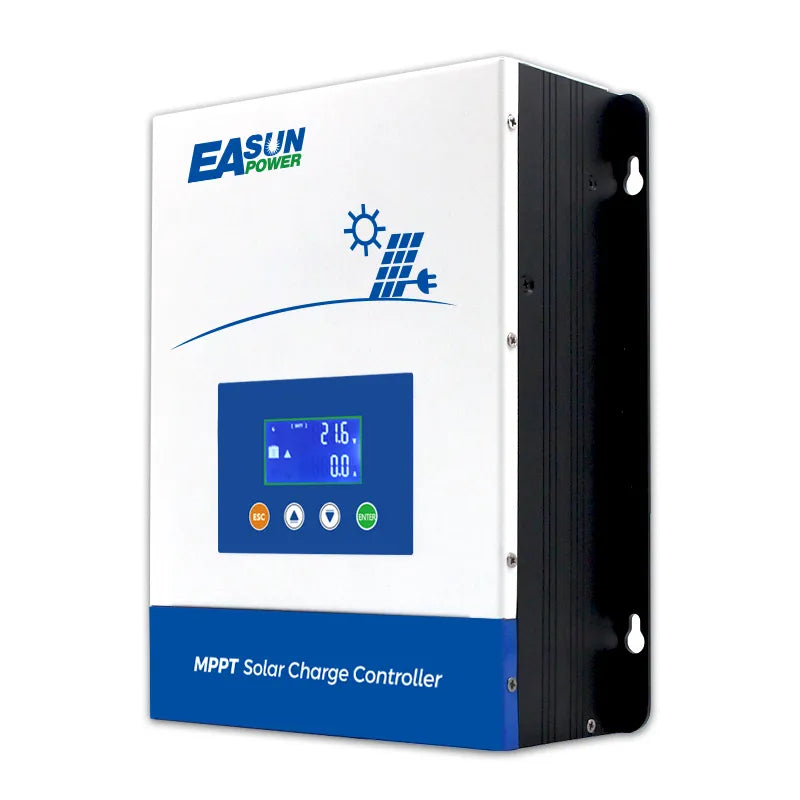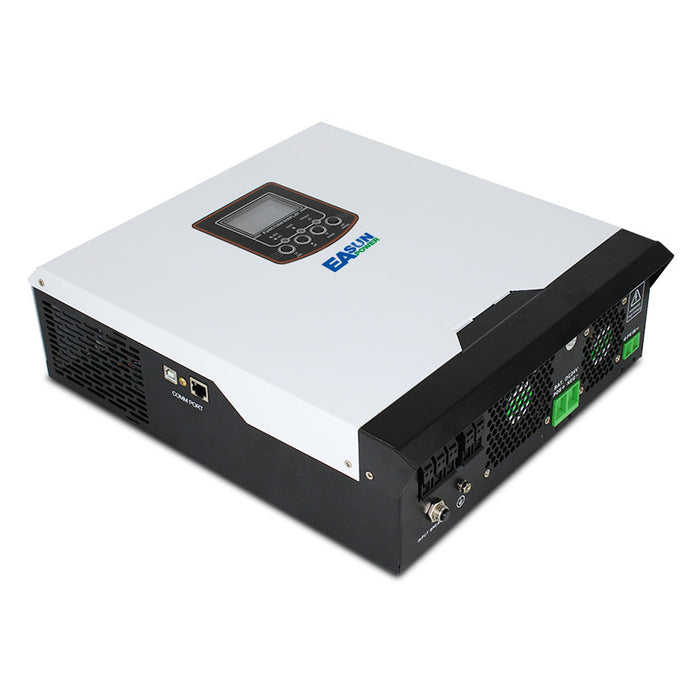
Do I Need a PWM or MPPT Solar Charge Controller?
Quick Answer: When choosing between a PWM and an MPPT solar charge controller, consider the size of your solar system (use PWM for systems under 150 watts and MPPT for larger systems), efficiency (MPPT is more efficient, especially in varying weather and higher voltage situations), and cost (PWM is less expensive, but MPPT may offer better long-term value due to higher efficiency). Additionally, considering the complexity of installation and future scalability needs; PWM is simpler and suitable for basic setups, while MPPT is better for complex or expanding systems. Choose based on your specific system requirements, budget, and plans for future expansion.
| Feature | PWM | MPPT |
|---|---|---|
| Best Suited System Size | Under 150 watts | 150 watts and above |
| Efficiency | Less efficient | More efficient (up to 30% more) |
| Cost | Less expensive | More expensive but may offer better long-term value |
| Complexity of Installation | Simpler, easier to install | More complex, may require professional installation |
| Flexibility & Compatibility | Works best with voltages close to battery voltage | Compatible with a wider range of voltages and configurations |
| Cold Weather Performance | Lower performance in cold weather | High efficiency even in cold temperatures |
| Scalability for Future Expansion | Limited scalability | Good scalability; can easily add more panels |
Introduction
As the world moves towards a more sustainable future, solar energy has become an increasingly popular choice for households and businesses alike. In Germany and other European countries, the adoption of solar power systems has been on the rise, thanks to supportive government policies and a growing awareness of the benefits of clean energy. When setting up a solar power system, one of the crucial components to consider is the solar charge controller. This article will explore the two main types of solar charge controllers, PWM and MPPT, and help you determine which one is best suited for your needs.
The Role of Solar Charge Controllers in Solar Systems
A solar charge controller is an essential component in any solar power system. Its primary function is to regulate the flow of electricity from the solar panels to the battery bank, preventing overcharging and ensuring optimal battery performance. Without a proper solar charge controller, your batteries may suffer from reduced lifespan and efficiency, ultimately compromising the reliability of your solar power system.
What Is MPPT?
MPPT, or Maximum Power Point Tracking, is an advanced technology used in solar charge controllers. MPPT controllers constantly monitor the voltage and current from the solar panels, adjusting the resistance to ensure that the panels are operating at their maximum power point. This allows the system to extract the maximum amount of energy from the solar panels, even under varying weather conditions

Pros and Cons of MPPT Solar Charge Controllers
MPPT solar charge controllers offer several advantages:
- Higher efficiency: MPPT controllers can achieve up to 30% more energy harvest compared to PWM controllers.
- Flexibility: MPPT controllers can work with a wider range of solar panel configurations and voltages.
- Better performance in cold weather: MPPT controllers can maintain high efficiency even in cold temperatures.
However, MPPT controllers also have some drawbacks:
- Higher cost: MPPT controllers are generally more expensive than PWM controllers.
- Complexity: MPPT controllers are more complex and may require professional installation and maintenance.
What Is PWM?
PWM, or Pulse Width Modulation, is a simpler and more traditional technology used in solar charge controllers. PWM controllers work by rapidly switching the solar panel output on and off, effectively reducing the amount of power sent to the batteries as they approach full charge. This helps to prevent overcharging and prolong battery life.

Advantages and Disadvantages of PWM Solar Charge Controllers
PWM solar charge controllers have several advantages:
- Lower cost: PWM controllers are generally less expensive than MPPT controllers.
- Simplicity: PWM controllers are simpler in design and easier to install and maintain.
- Reliability: PWM controllers have been in use for many years and have proven to be reliable.
However, PWM controllers also have some disadvantages:
- Lower efficiency: PWM controllers are less efficient than MPPT controllers, especially in low-light conditions.
- Limited compatibility: PWM controllers work best with solar panels that have a voltage close to the battery voltage.
MPPT VS PWM: How to Choose?
When deciding between an MPPT or PWM solar charge controller, several factors should be considered:
Solar System Size
Firstly, the size of your solar power system plays a crucial role in determining which type of controller is most suitable. For smaller systems with a total power output of less than 150 watts, a PWM controller can often provide sufficient performance. These controllers are generally simpler, more affordable, and easier to install and maintain, making them a good choice for those with limited technical expertise or budget. However, for larger systems exceeding 150 watts, an MPPT controller is usually the recommended option. MPPT controllers are designed to maximize energy harvest and efficiency, ensuring that your solar panels are always operating at their optimal power point. In Germany, where the average household solar power system size is approximately 7 kilowatts, MPPT controllers are the clear choice for the majority of installations.
Efficiency
Efficiency is another critical factor to consider when selecting a solar charge controller. MPPT controllers are known for their superior efficiency compared to PWM controllers, particularly in low-light conditions or when the voltage of the solar panels is significantly higher than that of the battery bank. This is particularly relevant in countries like Germany, where weather conditions can be variable and sometimes challenging for solar power systems. Studies have demonstrated that MPPT controllers can improve energy yield by up to 30% compared to PWM controllers, making them a worthwhile investment for those seeking to maximize the performance of their solar power system.

System Compatibility
System compatibility is also a key consideration when choosing between MPPT and PWM controllers. PWM controllers are best suited for solar panels with a voltage that is close to the voltage of the battery bank. If the solar panel voltage is significantly higher than the battery voltage, an MPPT controller is necessary to ensure optimal performance. In Germany and other European countries, most modern solar panels are designed with voltages that are well-suited for use with MPPT controllers, further reinforcing their suitability for the majority of installations.
Installation and Maintenance
While PWM controllers are generally easier to install and maintain, making them a popular choice for DIY solar power systems or those with limited technical expertise, MPPT controllers are more complex and may require professional installation and maintenance. However, in Germany, there is a well-established and knowledgeable network of solar energy professionals who are experienced in working with MPPT controllers. As a result, the installation and maintenance of these controllers are generally not a significant barrier for most households and businesses.
Scalability
Scalability is another important factor to consider, especially for those who plan to expand their solar power system in the future. MPPT controllers are designed to work with a wide range of solar panel configurations and voltages, making it easier to add more panels to your system as your energy needs grow. This is particularly relevant in Germany, where the Renewables Energy Act (EEG) actively encourages the expansion of renewable electricity. As a result, many households and businesses prioritize scalability when selecting a solar charge controller.
Cost
Finally, cost is always a consideration when investing in a solar power system. While PWM controllers are typically less expensive than MPPT controllers upfront, the long-term benefits of MPPT controllers, such as increased efficiency and energy harvest, can often offset the initial cost difference. In Germany, where solar power is heavily subsidized and feed-in tariffs are available, the long-term financial benefits of MPPT controllers frequently make them the more cost-effective choice over the lifespan of the solar power system.
In short, when deciding between an MPPT or PWM solar charge controller, it is essential to carefully consider factors such as system size, efficiency, compatibility, installation and maintenance requirements, scalability, and cost. By weighing these factors and understanding their relevance to your specific situation, you can make an informed decision that will optimize the performance, efficiency, and long-term success of your solar power system.

Lascia un commento